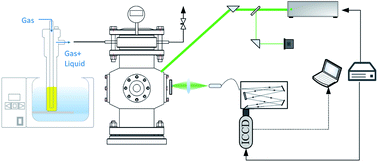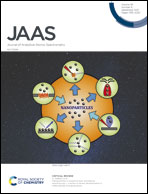Quantitative measurement of the mixture ratio for ADN-based liquid propellants using laser-induced breakdown spectroscopy
Abstract
Laser-induced breakdown spectroscopy (LIBS) experiments were carried out with an ammonium dinitramide (ADN)-based propellant to measure its distribution, that is the mixture ratio, in an inert atmosphere. A heating sampler was developed to produce a premixed sample with a known mixture ratio and this was connected to a chamber that had been designed to simulate the space propulsion environment. Determining the time window for the acquisition and saturation threshold of LIBS were the main motivations to investigate the effective lifetimes of atomic spectral lines and the effect of laser energy on the emission ratio. From the spectroscopic analysis, it was found that the ratio of the intensities of H (656.3 nm), O (777 nm) and N (746.8 nm) over Ar (738.4 nm) increased monotonically with the mixture ratio in the range of 0–0.06. A series of propellant/Ar mixtures with a pressure in the region of 40–100 kPa were used to obtain a linear correlation between the intensity ratio of LIBS spectra and the local mixture ratio. It was observed that the logarithm of the slope of the lines also showed a linear correlation with the pressure. Considering that the current method was applied by necessity with the given pressure, the local pressure was studied based on its dependence on the full width at half maximum (FWHM) of H and Ar spectral lines. Consequently, the emission ratios of H/Ar, O/Ar and N/Ar were utilized as a diagnostic tool to obtain the distribution of the propellant in the inert atmosphere. The LIBS-based results not only provide fundamental data for the on-line measurements of ADN-based thrusters, but also hold promise for promoting the application of LIBS in the field of energetic ionic liquids.



 Please wait while we load your content...
Please wait while we load your content...